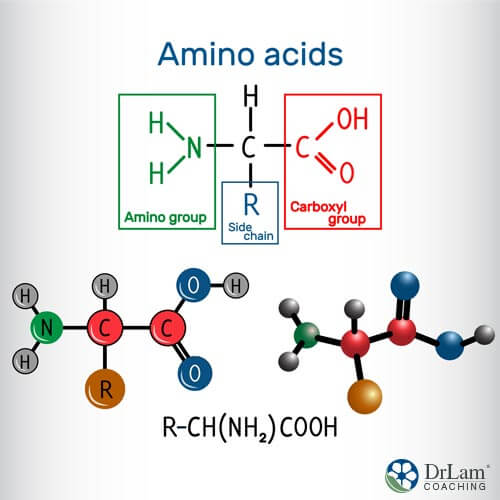 Peptide therapy is an exciting new approach for many age-related conditions. Peptides are found naturally in the body and result from a combination of at least two amino acids. They are small versions of proteins. They function primarily as signaling agents within the body, orchestrating the symphony of physiological responses. Acting as the conductor, peptides are chemicals that sit on the top of multiple hormonal cascades. They affect every part of the body, regulating growth, vitality, libido, the color of your skin, hair growth, metabolism, and digestion. No part of your body can escape their influence. Compounds with fewer than 50 amino acids are considered peptides, more than 100 are labeled as proteins, and those between the two are called polypeptides.
Peptide therapy is an exciting new approach for many age-related conditions. Peptides are found naturally in the body and result from a combination of at least two amino acids. They are small versions of proteins. They function primarily as signaling agents within the body, orchestrating the symphony of physiological responses. Acting as the conductor, peptides are chemicals that sit on the top of multiple hormonal cascades. They affect every part of the body, regulating growth, vitality, libido, the color of your skin, hair growth, metabolism, and digestion. No part of your body can escape their influence. Compounds with fewer than 50 amino acids are considered peptides, more than 100 are labeled as proteins, and those between the two are called polypeptides.
The development of insulin therapy in the 1920s marked the beginning of peptide therapy in medical practice. Currently, more than 60 peptide medications have gained FDA approval to be used as drugs in the U.S. As of 2015, researchers have utilized hundreds of peptide medications in clinical trials, and the number is rapidly increasing. Since scientists identify more than 7000 peptides in the body, this number of trials only touches the surface of possibilities. In 2011, the world market for peptide therapy hovered around $14.1 billion.
Your body uses peptides as signaling molecules for biological pathways and as hormones. They bind to receptors on the surface of cells, where they communicate with other cells and instruct them on what to do. Their action is fast, short-acting, and because they are “upstream” signaling agents, they tend to be more broadly focus on influencing multiple chemical pathways. For example, insulin, which is the most famous peptide, binds to a cell's receptor and tells the cell to bring glucose into the cell.
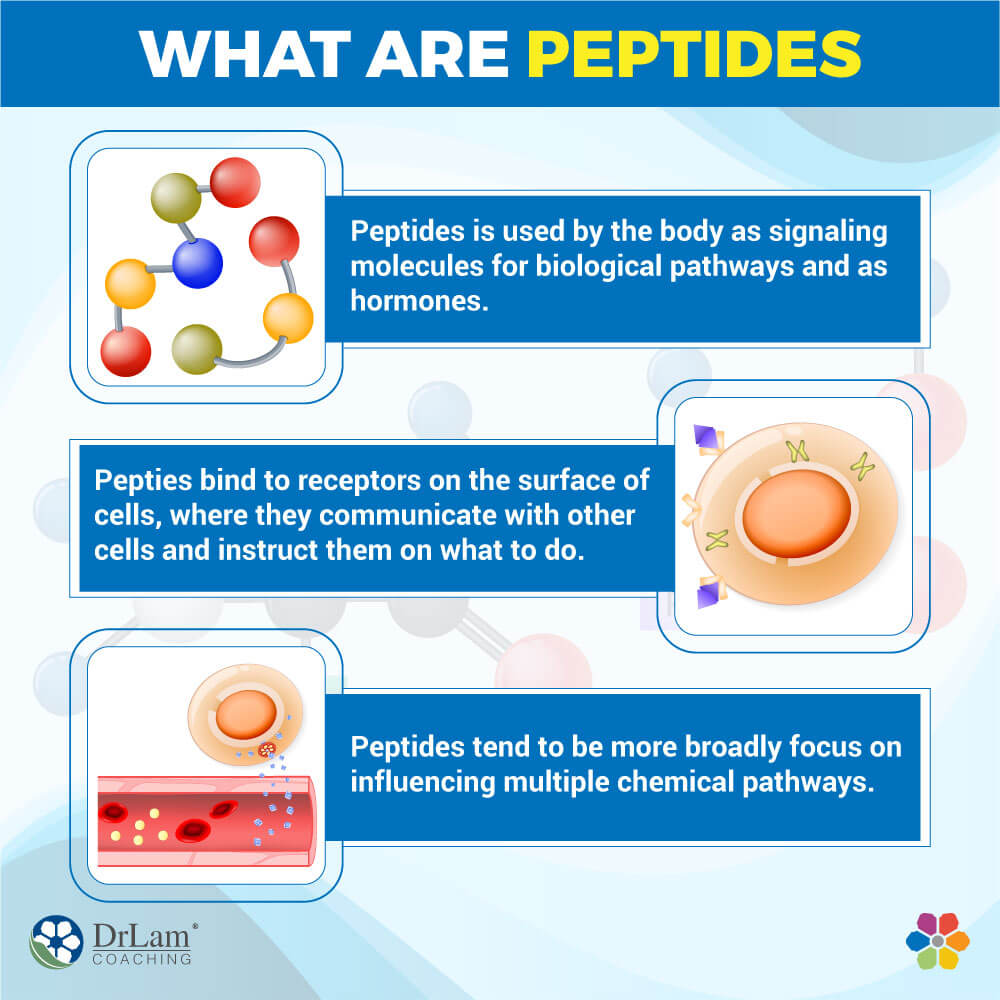
Hormones mostly act intracellularly and modulate specific pathways. This is different from peptides, which work outside the cell. Growth hormone (GH), for example, is a specific hormone for growth, while growth-hormone-releasing peptide (GHRP) works more upstream to modulate the level of growth hormone. Administering GH will generate a more targeted result. Using the peptide will allow the body to self regulate the level of growth hormone needed by keeping the feedback loops intact. It is a gentler approach overall.
One of the bonuses of peptides is that they do not accumulate in the body. Since your body already uses them for signaling purposes, breaking them down and recycling them poses no problem.
When amino acids join together, they form a peptide bond. All of the cells in your body contain peptides. Typically they become synthesized through the translation of mRNA into hormones and signaling agents. On the other hand, some peptides come together to form enzymes. If you suffer from a condition that stems primarily from chronic stress, such as chronic infection or adrenal fatigue, adding peptides does not add to the stress already felt by your body.
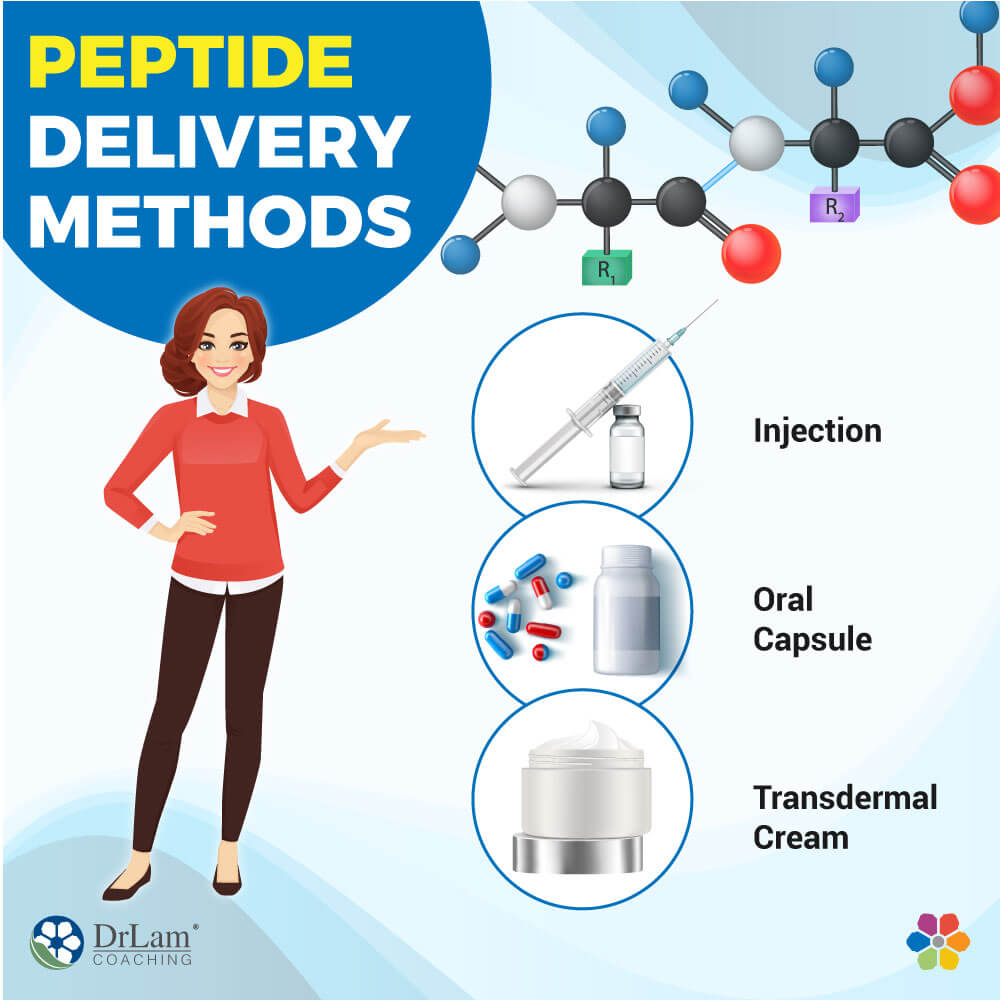
Various types of peptide therapy are synthesized from chemical processes or genetically modified cells. Injections, oral capsules, or transdermal creams make up the most frequently used forms of peptide therapy. There are very few side effects associated with peptides because they look the same as the signaling molecule in your body.
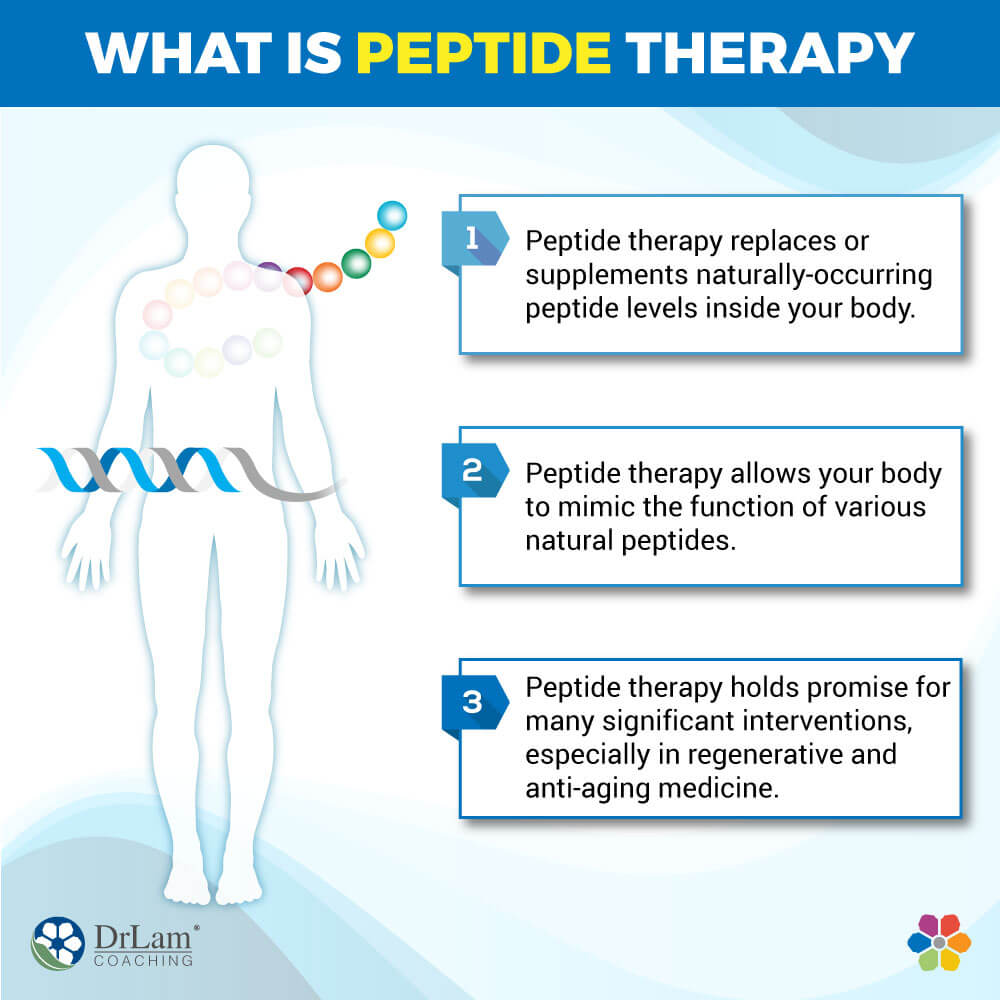
Peptide therapy replaces or supplements naturally-occurring peptide levels inside your body. Because they are already working in your body, peptides supply a remediation approach resembling natural pathways.
This allows changes inside your body that closely mimic your body’s natural structures. Peptide therapy also allows your body to mimic the function of various natural peptides.
Since peptides regulate various functions of your body (such as the ability to lose weight, function sexually, or digest foods adequately), peptide therapy holds promise for many significant interventions, especially in regenerative and anti-aging medicine.
These are some of the uses of peptide therapy:
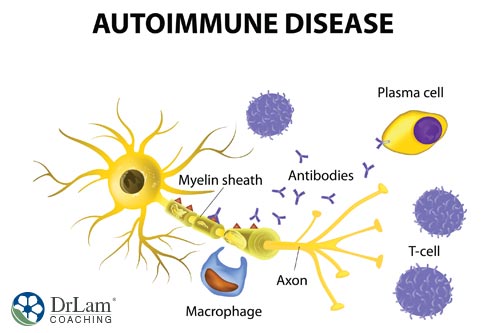 Autoimmune conditions, including rheumatoid arthritis or Hashimoto’s thyroiditis, involve antigens that develop with the help of inflammatory T cells targeting and attacking tissues in your body. With peptide therapy, T cell receptor proteins undergo changes to help reduce or prevent damage to tissue. Peptides such as thymosin alpha-1 or thymosin beta can help to balance immune modulators such as TH1 and TH2.
Autoimmune conditions, including rheumatoid arthritis or Hashimoto’s thyroiditis, involve antigens that develop with the help of inflammatory T cells targeting and attacking tissues in your body. With peptide therapy, T cell receptor proteins undergo changes to help reduce or prevent damage to tissue. Peptides such as thymosin alpha-1 or thymosin beta can help to balance immune modulators such as TH1 and TH2.
Peptide therapy also appears effective in dealing with Parkinson’s disease and any neurodegenerative disorder. In Parkinson’s, symptoms result from a slight decrease in cells in the middle of the brain. This leads to a reduction in dopamine, leading to a chemical imbalance. Low levels of dopamine cause Parkinson’s symptoms such as balance problems, tremors at rest, and slow movement. An injection of altered peptides leads to a blocking of a protein called NF-kB. This works to decrease the above symptoms.
One of the conditions for which peptide therapy appears effective is multiple sclerosis. People who suffer from this condition experience flare-ups of the myelin sheath surrounding neurons in the brain. When their own immune system attacks the myelin, symptoms result. An alteration of a specific protein segment, myelin basic protein (MBP), forms the basis of this approach. The manipulation that forms the basis of this change is called altered peptide ligand (APL) protein therapy.
A tremendous need exists for the development of new approaches to dealing with cancer. Conventional methods tend to lose effectiveness due to resistance to known drugs, a decrease in tumor selectivity, and solubility. Peptide therapy appears as a viable option for this kind of remediation when appropriately used as an adjunct therapy, helping the body’s immune system.
Two peptides, BPC-157 and Bremelanotide, appear useful in fighting the effects of aging. They work by correcting hormone imbalances and reducing the effects of aging. Included in their impact:
In this area of research, BPC-157 shows positive results experimentally. It tends to speed up the healing of several different kinds of wounds, including torn ligaments and fractured bones. In the gut system, BPC-157 appears effective in dealing with inflammatory bowel disease, leaky gut, IBS, and cramps in the GI system.
Several peptides work to reduce visceral fat from the abdomen. These include CJC1295, Ipamorelin, Tesamorelin, Semaglutide, and MOTS-C. CJC1295 and Ipamorelin also work to increase growth hormones. This combination of peptides works to improve deep wave sleep and cannot be overdosed. One side effect of CJC1295 is flushing. This and headache have been reported and tend to go away on their own in a few hours.
MOTS-C is a mitochondrial signaling short peptide that activates the muscles and AMPK-activated protein kinases. AMPK is a primary regulator of energy homeostasis and assists with the maintenance of metabolic homeostasis and flexibility. MOTS-C peptide works on a cellular level and is also effective at boosting your body's energy level, helping you to resist metabolic-related stress. It could also potentially reduce your resistance to insulin and risk of developing diabetes. More energy, limited stress, and improved insulin resistance all help to keep your weight in check.
Another one of the peptides for weight loss is Tesamorelin, which can be beneficial in helping weight loss. This is possible because of its capacity to minimize adipose (fat) tissue in the body, reduce triglyceride levels in persons with good health, and positively affect insulin resistance.
This is one of the newest developments in peptides for weight loss, approved in 2021 by the U.S. Food and Drug Administration (FDA) for the purpose of weight management. Semaglutide mimics glucagon-like-peptide-1 (GLP-1), which is a hormone involved in the regulation of food intake and appetite. Specifically, Semaglutide increases insulin production, and also prevents glucagon release, which in turn, decreases blood sugar levels in the body. It is typically administered as a subcutaneous injection once a week and has been shown to be effective at promoting weight loss in individuals with obesity. In clinical trials, semaglutide has been shown to produce significant reductions in body weight and waist circumference, as well as improvements in markers of metabolic health such as blood pressure and blood sugar levels. It is generally well-tolerated, with the most common side effects being nausea and diarrhea, which tend to resolve over time.
A combination of HCG and growth hormone-releasing peptide-2 (GHRP-2) appears effective in increasing libido that declines due to aging. Working together, these two substances send strong signals to your body to produce hormones that tend to drop with age and physical issues. Another essential peptide, PT 141, also helps in increasing libido. It appears to work on the central nervous system to bring on erections and increase libido. This peptide is FDA approved for women to increase sexual gratification by 50%. Nausea may be one side effect.
In the area of increasing mood, DHH-B works to alleviate anxiety, which often accompanies depression. Semax works to improve depression, along with Selank. Both of these latter two peptides can be administered in a nasal spray.
DSIP is a well-known neuromodulator and natural somnogenic nonapeptide. It helps promote sleep and can be used in conjunction with other sleep aids such as glycine.
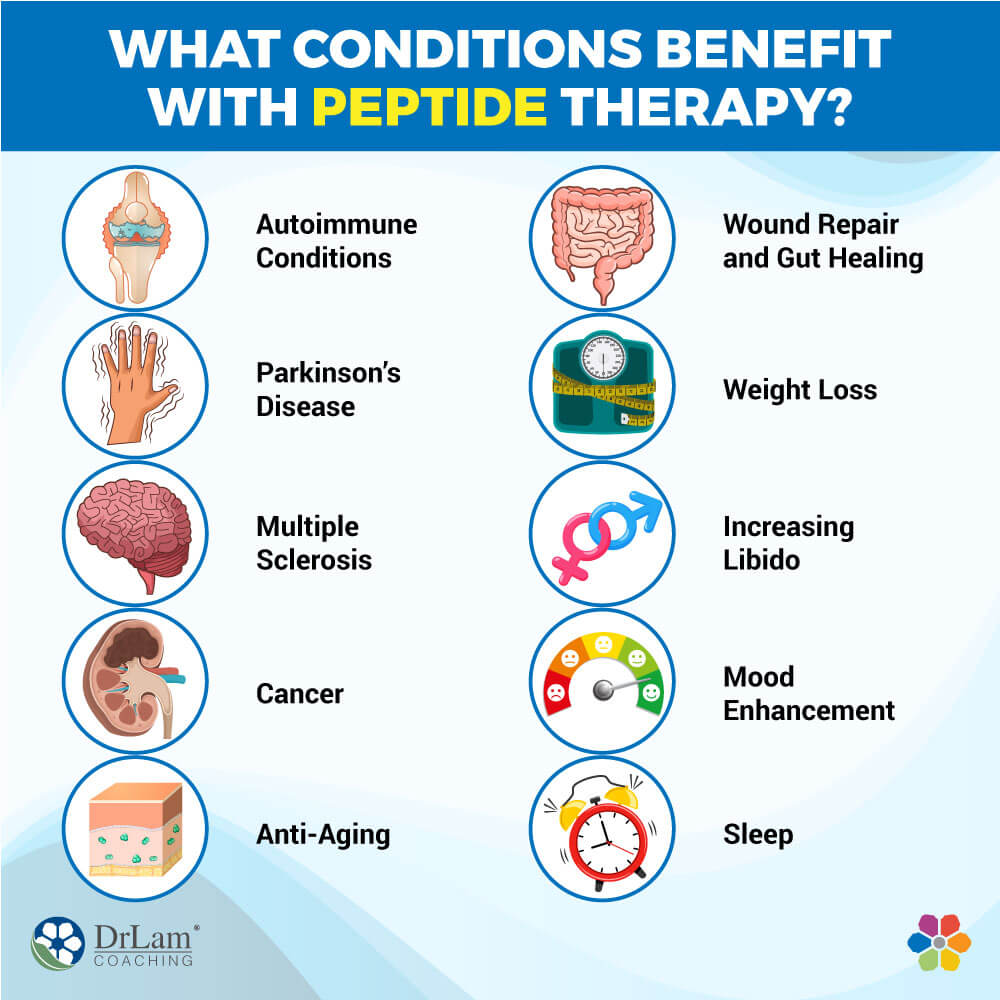
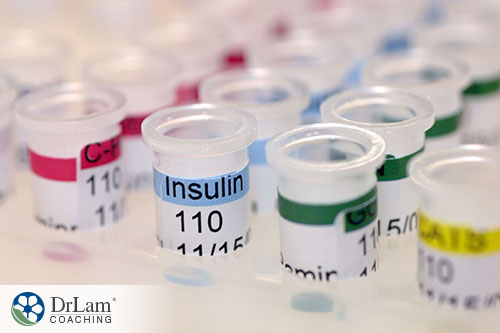 Since the 1920s, research into peptides and their uses has changed and continues to evolve with the development of new drugs and interventions. The first half of the twentieth century witnessed the development of medications to treat life-threatening conditions. Peptides that came from natural sources, such as ACTH and insulin, formed the basis for these medications.
Since the 1920s, research into peptides and their uses has changed and continues to evolve with the development of new drugs and interventions. The first half of the twentieth century witnessed the development of medications to treat life-threatening conditions. Peptides that came from natural sources, such as ACTH and insulin, formed the basis for these medications.
The 1950s brought further progress in developing peptide therapy. Clarification of the sequencing of peptides and the ability to synthesize peptides brought synthetic vasopressin and oxytocin. Following that, the discovery of bioactive peptides in the venom of arthropods and cephalopods changed the direction of research to identifying natural peptides from far-flung sources.
Research into the human genome provided a new and fertile field for research into peptides. Receptors on cell bodies became subjects for studies of endogenous peptide hormones. Research began to look for novel peptide ligands for these receptors.
As in much research into medical uses of natural or synthetic substances, researchers came face to face with limitations of peptide therapy. Peptides natural to the body were only available for a short time in the stomach, resulting in a lack of bioavailability when taken by mouth. This was due to the multitude of enzymes and other mechanisms that worked to inactivate peptides and remove them from the body. While these compounds and mechanisms serve to maintain hormone homeostasis, they significantly limit the usefulness of peptides in a therapeutic sense.
Research began focusing on bettering the half-life of peptides, increasing their stability, and improving the selectivity of receptors. At this time, peptide therapy mimicking native hormones came into the arena.
Due to the importance of proteins in your diet, your digestive tract contains multiple enzymes that break peptide bonds. Medications that involve peptides would not make a successful transit of the digestive tract without modified peptides.
And even if medications involving peptides should successfully move through the digestive tract, another significant barrier confronts them. Cells in the walls of your intestines do not allow passage through them and into the blood.
For this reason, peptides typically must be injected to get into your blood.
Increasing the bioavailability of peptides through oral administration has been labeled the ‘holy grail’ of peptide chemistry. Recent research at the Technical University of Munich approached this subject and achieved some positive results.
Researchers worked with integrin receptors on the surface of cells. These receptors function as controllers for a number of actions that take place on the cell surfaces. Their goal was to enable peptides to dock with these receptors.
Three amino acids provide the key to docking with the receptors. A sequence of arginine, glycine, and aspartic acid make up the peptide that allows docking. The positive charge of the arginine and the negative charge of the aspartic acid created a problem that was solved by masking them with protective groups. This allowed the two amino acids to make the trip to the receptors without issues.
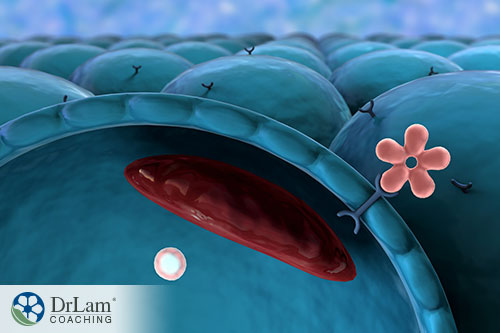 One key to the successful use of peptides in dealing with so many serious conditions is the receptors, or integrins, on the surface of cells in the body. These integrins allow communication between cells, which is a chief characteristic of multicellular organisms. Integrins allow for information regarding the environment to pass into the cell itself.
One key to the successful use of peptides in dealing with so many serious conditions is the receptors, or integrins, on the surface of cells in the body. These integrins allow communication between cells, which is a chief characteristic of multicellular organisms. Integrins allow for information regarding the environment to pass into the cell itself.
Malfunctioning integrins form the basis for many conditions. This makes them ripe for investigation by researchers and as targets for peptide therapy. One excellent example of malfunctioning integrins exists in tumors. Tumors send messages to blood cells instructing them to continue growing to ensure a blood supply for the tumors.
The recognition sequence of amino acids also plays a significant role in the use of peptides. Eight subtypes of the twenty-four human integrins can recognize the sequence of three amino acids mentioned above, arginine, glycine, and aspartic acid.
This three amino acid structure works like a key in a lock for those eight integrin receptors. They begin a reaction in the cells with these receptors. The sequence of amino acids combined with other amino acids that play a recognition role determines which integrin receptors that combination will fit into.
Research is now searching for molecules with the same recognition sequences and structures to allow the same cell reactions. Once they find the process by which specific unique integrin subtypes become targets of peptides, a considerable step toward personalized medicine takes place.
Adrenal Fatigue Syndrome (AFS) is a chronic condition that manifests as multiple nonspecific symptoms such as fatigue, exercise intolerance, reactive hypoglycemia, low blood pressure, insomnia, anxiety, or GI disruption that vary in severity and effect. Laboratory tests are usually normal, while those who suffer from the condition can be incapacitated and bed-bound in severe cases.
As the different kinds of peptides are discussed, take note of their potential effects on your body, especially if you suffer from adrenal fatigue. Each of these peptides can prove useful in peptide therapy and may target some of your symptoms.
Body Protective Compound 157 (BPC 157) contains 15 amino acids and comes from human gastric juices. It’s an especially exciting peptide because it is only produced in the human body.
Research has shown it to be effective in improving the healing of different wounds, including bone and muscle healing. It has been shown to counter the effects of NSAIDs like ibuprofen or Advil in the stomach. It appears to positively affect gastric ulcers and leaky gut as well.
Its major claim to beneficial effects occurs in aiding the healing of soft tissue injuries that affect tendons, ligaments, and skeletal muscles. Currently, these types of injuries require long periods of rehabilitation before complete healing occurs.
Peptide therapy with BPC 157 appears to affect tissue in two phases of healing from these kinds of injuries. In both phases of healing, BPC 157 appears to enhance the growth of new connective tissue that grows alongside tendon fibroblasts. BPC is a stable peptide that survives gastric breakdown. Oral BPC is particularly helpful for gut health, while subcutaneous BPC has more of a systemic effect.
 The use of BPC 157 provides needed healing potential for AFS sufferers who experience slow wound healing due to their condition. It is also great for those who suffer from leaky gut, food sensitivities, joint aching, and inflammation in the stomach. The oral form is particularly well suited for the GI tract. The subcutaneous route is preferred for all other uses.
The use of BPC 157 provides needed healing potential for AFS sufferers who experience slow wound healing due to their condition. It is also great for those who suffer from leaky gut, food sensitivities, joint aching, and inflammation in the stomach. The oral form is particularly well suited for the GI tract. The subcutaneous route is preferred for all other uses.
Naturally produced by the thymus gland, thymosin alpha 1 (TA1) works to modulate the immune system. Its primary task is to control the maturation of T-cells. Individual T-cells come from the thymus, which models them specifically to deal with foreign bacteria, viruses, and other substances that pose a threat to health.
Peptide therapy with TA1 works to improve immune functioning and to help fight against the development of autoimmune conditions. TA1 appears to increase the effectiveness of killer T-cells as they search out and destroy cells that have become cancerous or infected by bacteria or viruses. Currently, TA1 is being used to deal with chronic fatigue and Lyme disease. It is undergoing evaluation to determine its effectiveness in dealing with drug-resistant tuberculosis, malignant melanoma, and hepatocellular carcinoma as well as some viral infections.
TA1 may provide benefits through strengthening the immune system and decreasing the risk of developing autoimmune conditions. Also, it may aid in helping your body get rid of unhealthy cells and stop the spread of infections. Likewise, TA1 has antibacterial and anti-fungal properties. It is a very good peptide to start for someone with AFS due to helping with basic immune function. Also, if one gets a common cold, TA1 can be used to give a temporary boost to the immune system to fight off the infection. A weak body is strongly associated with low TH1 which TA1 can boost
This peptide has multiple effects and seems to work well on repairing soft tissue, such as muscle and heart tissue. It operates through an angiogenic effect, an anti-inflammatory effect, and as an actin-sequestering protein. It increases the number of cells involved in healing and improves the ability of cells to migrate to the site of injuries. Also, it decreases the likelihood of scar tissue forming. Among its other properties, it is antimicrobial, supports immunity, and improves T cells. It also seems to work well for spinal cord injuries with TBI, and for concussions in conjunction with BPC-157, as well as for ischemic stroke, corneal injuries, and lung inflammation.
Currently, it is undergoing phase II clinical trials in the treatment of dry eye disorders. Research and clinical practice have also shown TB4 to be effective in cardioprotection. In addition to its healing properties with heart tissue, it appears proangiogenic, works to reduce infarct volume, preserves cardiac function in preclinical models, and is antifibrotic. In non-alcoholic fatty liver disease, TB4 decreases inflammation, reduces hepatic fibrosis, and works to stop oxidative stress.
Inflammation in large amounts comes with AFS. The anti-inflammatory properties of TB4 will benefit sufferers by decreasing the inflammation that affects so many systems negatively. Supporting the immune system can help those with AFS by helping the immune system work more efficiently. Its cardioprotective properties also will provide significant benefits for those with AFS.
 This peptide is classified as a GHRP (growth hormone-releasing peptide) and works in similar ways as growth hormone-releasing hormone (GHRH), except on different receptors and thus different pathways. But unlike GHRH, which has a short half-life after administration intravenously, CJC 1295 continues active in your body for much longer periods. It does this by binding to albumin in your blood where the various enzymes circulating there will not degrade it. This peptide also raises the level of another growth factor, IGF-1. Added to hGH, this combination increases weight loss, improves sleep, and increases lean muscle mass.
This peptide is classified as a GHRP (growth hormone-releasing peptide) and works in similar ways as growth hormone-releasing hormone (GHRH), except on different receptors and thus different pathways. But unlike GHRH, which has a short half-life after administration intravenously, CJC 1295 continues active in your body for much longer periods. It does this by binding to albumin in your blood where the various enzymes circulating there will not degrade it. This peptide also raises the level of another growth factor, IGF-1. Added to hGH, this combination increases weight loss, improves sleep, and increases lean muscle mass.
Peptide therapy with CJC 1295 may prove helpful for those suffering from AFS. One of the significant symptoms of AFS is sleeplessness. With the ability to increase sleep, CJC 1295 might deserve a trial. Another issue with AFS, difficulty in losing weight, especially around the middle of the body, may get a helpful boost with this peptide. CAUTION: Due to its stimulatory effect, adrenal crashes may be experienced if the body is not well prepared ahead of time.
Peptide therapy with growth hormone-releasing peptide (GHRP) 2 works similarly to ghrelin, the ‘hunger hormone’. Since GHRP-2 mimics ghrelin, it helps modulate appetite, metabolism, and energy usage.
Using GHRP-2 in peptide therapy could prove beneficial for those suffering from the effects of AFS on metabolism and energy usage. In AFS, metabolic functioning often becomes dysregulated, leading to dysregulation of energy as well. Peptide therapy with GHRP-2 could assist in improving the regulation of these critical functions.
Mechano growth factor, MGF, comes from insulin-like growth factor-1 (IGF-1). Peptide therapy with MGF encourages the repair of damaged tissue by activating muscle stem cells. This increases the protein synthesis required for muscle growth. Peptide therapy with MGF proves beneficial for anyone suffering from muscle loss due to age or illness.
People who suffer from AFS often experience loss of muscle mass. MGF could benefit them by increasing muscle mass. However, increasing protein synthesis could stimulate increased stress on the metabolic process, thus over-stimulating the adrenals and adding to AFS symptoms.
This peptide, found originally in human plasma, has also been found in urine and saliva, among other locations in the body. This peptide plays several roles in the body, including increasing wound healing, antioxidant and anti-inflammatory effects, attracting immune cells, and promoting the growth of blood vessels.
GHK-Cu works to protect tissue through its anti-inflammatory action on oxidative damage that comes with tissue injury. It also helps in tissue remodeling by removing damaged and scarred tissue, then replacing it with healthy tissue, making it a very useful skin-care product.
Increasing age leads to decreasing levels of GHK-Cu available in the body, so it is vital for anti-aging to have this compound applied on the skin for reducing wrinkles due to aging.
Peptide therapy with GHK-Cu could prove beneficial for those with AFS-related inflammation due to oxidation. Its effects on wound healing and immune cells likewise may prove helpful. Copper is also a much-needed compound in many enzymatic and cell reactions in the body. Therefore, it’s important to help your body out with this crucial cofactor.
DSIP is a neuropeptide that promotes sleep. Neuropeptides assist neurons in communicating with other neurons. DSIP is characterized as an amphiphilic peptide with both lipophilic and hydrophilic properties. DSIP typically comes from the pancreas and gut secretory cells. It has also been found to come from brain areas such as the hypothalamus, pituitary gland, and limbic system.
Peptide therapy with DSIP works to reduce stress levels by decreasing the amount of basal corticotrophin available. It encourages overall relaxation and weakens the brain’s alert system, helping with problems of sleeplessness.
It also increases the production of luteinizing hormone, which aids in ovulation in females and the creation of testosterone in males. Overall, DSIP helps regulate glucose and increases the utilization of nutrients in metabolism.
On the other hand, DSIP may contribute to metabolic syndrome and obesity. It may stimulate increases in blood pressure, serum triglycerides, and fasting plasma glucose, so those with metabolic syndrome should beware of it without proper supervision.
DSIP may help with sleeplessness often experienced with AFS as it works at helping sleep be more restful. Paradoxical reactions may be experienced. Combining DSIP with other sleep aids such as glycine has been quite promising, but should always be done with the advice of your doctor.
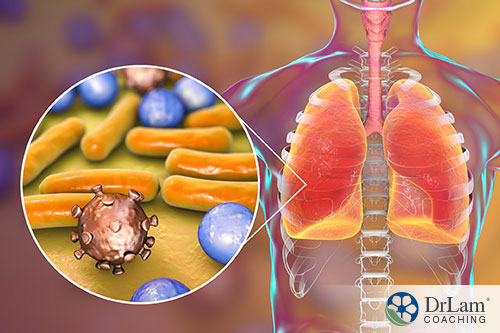 This peptide works well in helping to modulate infections. It appears to work better than the most-used conventional medications in dealing with intracellular staph aureus. In mice experiments, LL-37 was found to defeat MRSA in pneumonia. It disrupts the viral membranes in RSV and influenza A. It appears effective in fighting multi-drug resistance. LL-37 disrupts the cell wall of fungi and alters the DNA of fungi replication. In wound repair, LL-37 helps fight infection and re-epithelialization. LL-37 also improves the ability of mast cells to detect pathogens in the body.
This peptide works well in helping to modulate infections. It appears to work better than the most-used conventional medications in dealing with intracellular staph aureus. In mice experiments, LL-37 was found to defeat MRSA in pneumonia. It disrupts the viral membranes in RSV and influenza A. It appears effective in fighting multi-drug resistance. LL-37 disrupts the cell wall of fungi and alters the DNA of fungi replication. In wound repair, LL-37 helps fight infection and re-epithelialization. LL-37 also improves the ability of mast cells to detect pathogens in the body.
One potential drawback to LL-37 usage involves its ability to enhance the innate immune system. A difficulty here involves an overproduction of AMPs, which may increase the adaptive immune system. Too much increase in the adaptive immune system may lead to the development of autoimmune conditions.
People who suffer from AFS often find themselves more prone to infections. The use of this peptide may help decrease this. However, the increase in adaptive immunity suggests serious consideration before embarking on this kind of peptide therapy, especially if you have any autoimmune conditions. Consult your healthcare professional before using LL-37. This peptide should not be used on a long-term basis.
Of note, DHH-B is not a peptide but a natural anxiety supplement made from the bark of the Magnolia tree. Bioactive compounds found in this compound work to combat inflammation, help with weight loss, improve sleep and brain health, reduce stress, and relieve anxiety. It appears to work similarly to benzodiazepines, but without uncomfortable side effects.
The bark of the Magnolia tree produces several compounds with significant health properties. The one that aids in relieving anxiety is honokiol. It works by increasing the effects of GABA, a neurotransmitter that inhibits excitatory neurons in the brain. It also supports better sleep and reduces anxiety levels. Another way DHH-B works is by activating the receptors for cannabinoids, natural receptors in your body. This activation serves to improve mood, relieve pain, and reduce inflammation. Due to its potent antioxidant properties, DHH-B also lowers inflammation levels and oxidative stress throughout your body. This compound can be taken by mouth.
DHH-B works to decrease the levels of adrenaline, which is a powerful biochemical released by the brain in times of chronic and severe stress. This biochemical increases alertness and vigilance. Reducing these levels is a significant benefit for those suffering from AFS. DHH-B also decreases very high levels of cortisol, which can lead to serious physical issues. When used as an anti-anxiety agent, DHH-B lowers anxiety without affecting respiration or motor skills. Researchers say its action is similar to benzodiazepines like diazepam, without the harmful side effects. Always check with your physician before starting these compounds.
Although peptide therapy has a very rare side effect profile, some can appear. The reason there are so few side effects is that the amino acids can disassociate after doing its job, rather than having to be metabolized by the liver or the kidneys. Potentially serious side effects may result from inappropriate usage of peptides without a provider to guide you. Certainly, in the case of weakened bodies due to AFS, side effects could show up more frequently.
The following are the more likely side effects experienced with peptides:

Most side effects are localized and self-limiting. Some are due to improper dosage or administration. The proper sequencing is essential. The body does best with peptides when it is in a healthy state, well prepared ahead of time. CJC1295, for example, should not be used until the body’s overall inflammation is under control. The stronger the body, the better the outcome, and the fewer the complications.
Other age-related and chronic illness-related conditions can also derive benefits from peptide therapy. Conditions such as obesity, loss of muscle mass, osteoporosis, and many inflammatory conditions resulting from autoimmune conditions, fibromyalgia, and chronic fatigue could be improved by the use of certain peptides.
Regeneration of neurons in the brain and spinal cord is difficult. However, a sequence of peptides, selank, and semax, coming from laminin shows promise for improving neural regeneration.
Angiogenesis, the developing of new blood vessels from existing structures, also responds positively to peptide therapy. This may help in the remediation of heart-related conditions, issues involving peripheral vasculature, and in wound healing.
Peptide therapy also shows promise in increasing the viability of and ability to sustain islets in transplants involving the pancreas. This type of transplant carries with it significant difficulty due to a lack of beta-cell viability.
Some promise has also been shown in aiding remediation of atherosclerosis. Angioplasty and stenting at times bring limited success due to neointimal hyperplasia. Nitric oxide appears to help in dealing with this complication.
Permanent metal implants serve as the best replacement for hard tissue replacement currently. However, these implants do not contain a bioactive component. This limits their compatibility to an extent. Peptide therapy serves to increase tissue growth around these implants, thus improving their long-term fixation.
The regeneration of enamel continues as a problematic issue for dentistry. Peptide therapy has been suggested as a means of regenerating both soft and mineralized dental tissue when combined with dental stem cells.
Peptides should be taken on an empty stomach.
Using peptides in AFS requires special attention. A body that is not well prepared ahead of time can do WORSE with any peptide therapy. Taking the shotgun approach of using multiple peptides without titrating to the body’s needs is a common clinical mistake. The usefulness of peptides is contingent upon a body that can take them in and adequately process them. For example, if the body is in a pro-inflammatory state, take CJC-1295 can worsen AFS, increase fatigue, and lead to adrenal crashes.
The use of peptides for AFS should always be under the care of a peptide certified health care provider. The peptides themselves need to be sourced properly and undergo vigorous testing for purity both in synthesis and in final preparation. Use only a compounding pharmacy that is certified and accredited. Double-check with your provider regarding the pharmacy that they get the peptides from. The price may be many times higher, but it is well worth it.
 While peptides can be a significant game-changer in health management, they should be used strictly under the supervision and care of a physician. There is a lot of misconception on how peptides should be used because many acquire peptides over the internet and self administer them, when the FDA has not approved their preparation for human consumption. Peptides sold over the internet often have questionable purity and are for research use purposes only. Investigative reports have shown that close to 80% of peptide powders sold on the internet for reconstitution can be problematic. Only when dispensed through a licensed compounding pharmacy under the prescription of a licensed physician and closely monitor should peptide therapy be considered.
While peptides can be a significant game-changer in health management, they should be used strictly under the supervision and care of a physician. There is a lot of misconception on how peptides should be used because many acquire peptides over the internet and self administer them, when the FDA has not approved their preparation for human consumption. Peptides sold over the internet often have questionable purity and are for research use purposes only. Investigative reports have shown that close to 80% of peptide powders sold on the internet for reconstitution can be problematic. Only when dispensed through a licensed compounding pharmacy under the prescription of a licensed physician and closely monitor should peptide therapy be considered.
Peptide therapy appears useful for aiding in many age-related or chronic illness conditions, potentially including AFS. Peptides consist of strings of amino acids that form small proteins. They also function as hormones at times. Since peptides occur naturally, no concentrated detoxification is required when they are used in your body.
The new science of peptide therapy shows promise in helping you deal with many symptoms related to chronic illness conditions. Autoimmune conditions, Parkinson’s disease, Multiple Sclerosis, and some allergic conditions respond well to this therapy.
Numerous types of peptides show potential for usefulness in dealing with the symptoms of AFS along with other chronic conditions. However, some have not been sufficiently tested with humans at this point.
As with all attempts at remediation of symptoms of AFS or any other chronic disorder, you must consult with a healthcare professional who knows about AFS before trying any of these peptide therapies.
Peptide therapy has been shown to be effective for a large number of age-related conditions. Many of the symptoms of these conditions are found in AFS. Thus, this therapy may prove effective for dealing with AFS symptoms. Trials with human subjects need to be conducted to determine the true effectiveness.
